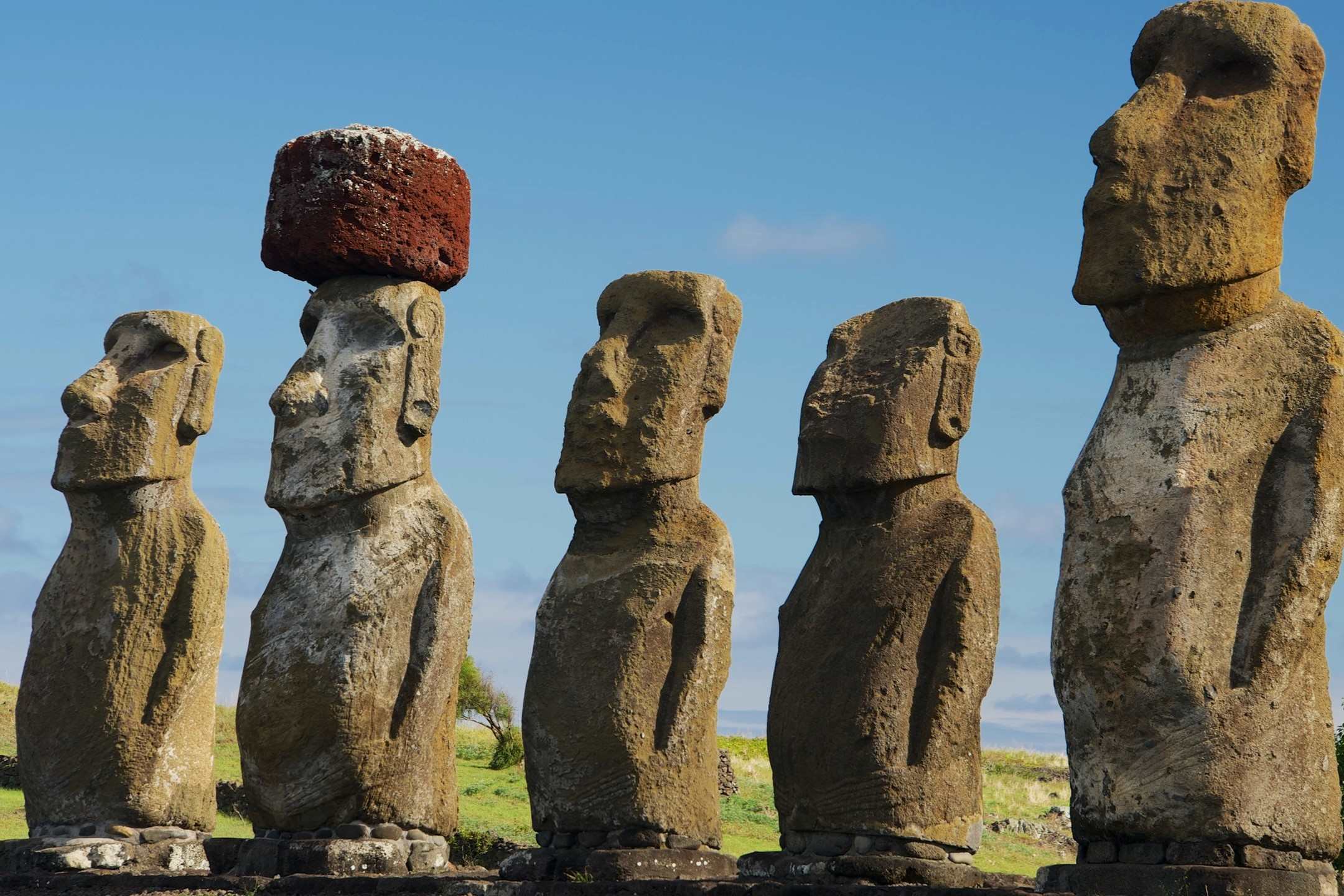Mysteries Of The Rapa Nui Moai Statues

Have you ever wondered about the mysteries of the Rapa Nui Moai statues? These giant stone figures on Easter Island have puzzled people for centuries. Standing tall with their solemn faces, the Moai statues are a testament to the ingenuity of the Rapa Nui people. How did they carve and transport these massive stones without modern tools? What purpose did they serve? Some believe they represent ancestors watching over the island, while others think they had a more practical use. Join us as we delve into the secrets of these ancient marvels and uncover the stories behind their creation.
The Enigmatic Origins
The Rapa Nui Moai statues are shrouded in mystery. These colossal stone figures, scattered across Easter Island, have puzzled historians and archaeologists for centuries. Let's explore some of the most fascinating aspects of these ancient marvels.
- Ahu Tongariki
Ahu Tongariki is the largest ceremonial platform on Easter Island. It features 15 restored Moai statues, standing tall against the backdrop of the Pacific Ocean. This site offers a glimpse into the island's rich cultural heritage.
- Rano Raraku
Rano Raraku, the quarry where most Moai were carved, is a treasure trove of unfinished statues. Here, visitors can see the process of Moai creation, with some figures still partially embedded in the rock.
- Ahu Akivi
Ahu Akivi is unique because its seven Moai statues face the ocean, unlike most others that face inland. According to legend, these statues represent seven explorers sent by the island's first king.
The Purpose Behind the Moai
The purpose of the Moai statues remains a topic of debate. Some theories suggest they were built to honor ancestors, while others believe they served as symbols of power and authority. Let's delve into some key sites that shed light on their purpose.
- Ahu Nau Nau
Ahu Nau Nau, located on Anakena Beach, features intricately carved Moai with detailed features. These statues are believed to represent important ancestors and were likely used in religious ceremonies.
- Ahu Hanga Te'e
Ahu Hanga Te'e is a lesser-known site with toppled Moai statues. The fallen figures provide clues about the island's turbulent history, including conflicts and natural disasters that may have led to their downfall.
- Ahu Vinapu
Ahu Vinapu stands out for its precise stonework, reminiscent of Inca architecture. This site suggests possible connections between Easter Island and South American civilizations, hinting at a broader cultural exchange.
The Mystery of Transportation
One of the biggest mysteries surrounding the Moai is how they were transported across the island. Various theories have been proposed, from rolling the statues on logs to "walking" them using ropes. Let's explore some key locations related to this enigma.
- Puna Pau
Puna Pau is the quarry where the red scoria topknots, or "pukao," were carved. These large cylindrical stones were placed on top of some Moai, adding to the challenge of transportation.
- The Road to Ahu Akivi
The path leading to Ahu Akivi is believed to have been one of the routes used to transport Moai. Researchers have found evidence of ancient roads and ramps, providing insights into the islanders' engineering skills.
- Theories at Ahu Te Pito Kura
Ahu Te Pito Kura is home to the largest Moai ever erected, known as Paro. Weighing around 82 tons, Paro's transportation remains a subject of fascination. Some theories suggest the use of a complex system of ropes and manpower.
The Decline of Moai Construction
The decline of Moai construction marks a significant period in Easter Island's history. Environmental changes, societal shifts, and external influences all played a role. Let's examine some sites that highlight this transition.
- Ahu Ature Huki
Ahu Ature Huki is one of the few sites where a single Moai was re-erected by Thor Heyerdahl's expedition in the 1950s. This effort aimed to understand the methods used by the islanders and sparked renewed interest in Moai research.
- Ahu Akahanga
Ahu Akahanga is an extensive site with numerous toppled Moai. The scattered statues and ruins reflect the island's decline and the eventual halt in Moai construction.
- Orongo
Orongo, a ceremonial village on the edge of a volcanic crater, marks the shift from Moai construction to the Birdman cult. This site features petroglyphs and stone houses, offering a glimpse into the island's evolving culture.
The Enduring Fascination of Rapa Nui
Rapa Nui's Moai statues continue to captivate people worldwide. These massive stone figures, carved centuries ago, stand as a testament to the islanders' ingenuity and culture. Despite many theories, the exact methods and reasons behind their creation remain a mystery, adding to their allure.
Visiting Rapa Nui offers a unique glimpse into a civilization that thrived in isolation. The island's remote location, combined with its rich history, makes it a must-see for history buffs and adventure seekers alike. Exploring the Moai statues up close, you can't help but feel a connection to the past.
Whether you're drawn by the mystery or the beauty of the island, Rapa Nui promises an unforgettable experience. The Moai stand as silent guardians of a culture that still intrigues and inspires.

